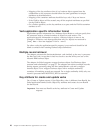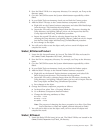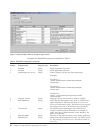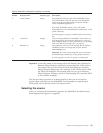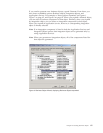
You
configure
and
run
SiebelODA
using
Business
Object
Designer.
Business
Object
Wizard,
which
Business
Object
Designer
starts,
locates
each
ODA
by
the
name
specified
in
the
AGENTNAME
variable
of
each
script
or
batch
file.
The
default
ODA
name
for
this
connector
is
SeibelODA.
Running
SiebelODA
on
multiple
machines
You
can
run
multiple
instances
of
the
ODA,
either
on
the
local
host
or
a
remote
host
in
the
network.
Each
instance
runs
on
a
unique
port.
Working
with
error
and
trace
message
files
Error
and
trace
message
files
(the
default
is
SiebelODAAgent.txt)
are
located
in
the
\ODA\messages,
subdirectory
under
the
product
directory.
These
files
use
the
following
naming
convention:
AgentNameAgent.txt
If
you
create
multiple
instances
of
the
ODA
script
or
batch
file
and
provide
a
unique
name
for
each
represented
ODA,
you
can
have
a
message
file
for
each
ODA
instance.
Alternatively,
you
can
have
differently
named
ODAs
use
the
same
message
file.
There
are
two
ways
to
specify
a
valid
message
file:
v
If
you
change
the
name
of
an
ODA
and
do
not
create
a
message
file
for
it,
you
must
change
the
name
of
the
message
file
in
Business
Object
Designer
as
part
of
ODA
configuration.
Business
Object
Designer
provides
a
name
for
the
message
file
but
does
not
actually
create
the
file.
If
the
file
displayed
as
part
of
ODA
configuration
does
not
exist,
change
the
value
to
point
to
an
existing
file.
v
You
can
copy
the
existing
message
file
for
a
specific
ODA,
and
modify
it
as
required.
Business
Object
Designer
assumes
you
name
each
file
according
to
the
naming
convention.
For
example,
if
the
AGENTNAME
variable
specifies
SiebelODA1,
the
tool
assumes
that
the
name
of
the
associated
message
file
is
SiebelODA1Agent.txt.
Therefore,
when
Business
Object
Designer
provides
the
file
name
for
verification
as
part
of
ODA
configuration,
the
file
name
is
based
on
the
ODA
name.
Verify
that
the
default
message
file
is
named
correctly,
and
correct
it
as
necessary.
Important:
Failing
to
correctly
specify
the
message
file’s
name
when
you
configure
the
ODA
causes
it
to
run
without
messages.
For
more
information
on
specifying
the
message
file
name,
see
Table
9
on
page
58.
During
the
configuration
process,
you
specify:
v
The
name
of
the
file
into
which
SiebelODA
writes
error
and
trace
information
v
The
level
of
tracing,
which
ranges
from
0
to
5.
Table
8
describes
these
values.
Table
8.
Tracing
levels
Trace
Level
Description
0
Logs
all
errors
1
Traces
all
entering
and
exiting
messages
for
method
2
Traces
the
ODA’s
properties
and
their
values
3
Traces
the
names
of
all
business
objects
4
Traces
details
of
all
spawned
threads
Chapter
5.
Creating
business
objects
55




